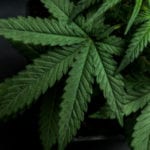 Weird Stuff
Weird Stuff  Weird Stuff
Weird Stuff  Our World
Our World 10 Ways Your Christmas Tree Is More Lit Than You Think
 Movies and TV
Movies and TV The 10 Coolest Stars to Set Sail on The Love Boat
 History
History 10 Things You Didn’t Know About the American National Anthem
 Technology
Technology Top 10 Everyday Tech Buzzwords That Hide a Darker Past
 Humans
Humans 10 Everyday Human Behaviors That Are Actually Survival Instincts
 Animals
Animals 10 Animals That Humiliated and Harmed Historical Leaders
 History
History 10 Most Influential Protests in Modern History
 Creepy
Creepy 10 More Representations of Death from Myth, Legend, and Folktale
 Technology
Technology 10 Scientific Breakthroughs of 2025 That’ll Change Everything
 Weird Stuff
Weird Stuff Ten Bizarre Facts About The Doge Meme
 Our World
Our World 10 Ways Your Christmas Tree Is More Lit Than You Think
 Movies and TV
Movies and TV The 10 Coolest Stars to Set Sail on The Love Boat
Who's Behind Listverse?

Jamie Frater
Head Editor
Jamie founded Listverse due to an insatiable desire to share fascinating, obscure, and bizarre facts. He has been a guest speaker on numerous national radio and television stations and is a five time published author.
More About Us History
History 10 Things You Didn’t Know About the American National Anthem
 Technology
Technology Top 10 Everyday Tech Buzzwords That Hide a Darker Past
 Humans
Humans 10 Everyday Human Behaviors That Are Actually Survival Instincts
 Animals
Animals 10 Animals That Humiliated and Harmed Historical Leaders
 History
History 10 Most Influential Protests in Modern History
 Creepy
Creepy 10 More Representations of Death from Myth, Legend, and Folktale
 Technology
Technology 10 Scientific Breakthroughs of 2025 That’ll Change Everything
10 Stinky Facts About Marijuana
The first direct reference to marijuana as a psychoactive agent dates from 2737 B.C. and is found in the writings of the Chinese emperor Shen Nung. In the past, marijuana has been used as a gift, treasure, medicine, ceremonial incense, and for recreation. There are currently hundreds of different slang terms used for marijuana, including pot, weed, grass, green, herb, ganja, Mary Jane, dank, chronic, doja, reefer, dope, cheeba, bud, and hydro. You’ve probably heard most of those, but there’s more to marijuana than the laundry list of pseudonyms.
10 Victor Licata

On October 16, 1933, Victor Licata murdered his parents, two brothers, sister, and family dog with an axe. He was declared unfit to stand trial and placed in a mental health facility. Despite the fact that marijuana abuse was never mentioned in his official diagnosis, the media used the case to start the marijuana-crime-insanity movement. Marijuana was said to be a “poisonous, mind-wrecking weed” that caused people to have homicidal tendencies.
The case of Victor Licata inspired a number of news reports and television movies that depicted marijuana as a trigger for murder. The most famous example is the 1936 film Reefer Madness (originally Tell Your Children). In the movie, a group of high school students are lured into trying marijuana. They are involved with a hit-and-run accident, manslaughter, suicide, attempted rape, and proceed to gradually go insane.
In 1941, American writer Cornell Woolrich published a novel named Marihuana, which painted the drug as causing “insanity, criminality, and death.” The book is based on the testimony of Harry Anslinger, who was the Commissioner of the Federal Bureau of Narcotics from 1930 until 1962. Anslinger is responsible for spreading anti-marijuana myths and starting a national movement against the weed. He is also behind a large number of shocking and untrue statements about marijuana. Anslinger drafted the 1937 Marijuana Tax Act, which made it illegal to sell marijuana.
His justification was that “there are 100,000 total marijuana smokers in the US, and most are Negroes, Hispanics, Filipinos and entertainers. Their Satanic music, jazz and swing, result from marijuana usage. This marijuana causes white women to seek sexual relations with Negroes, entertainers and any others.”
9 Cannabis Cup
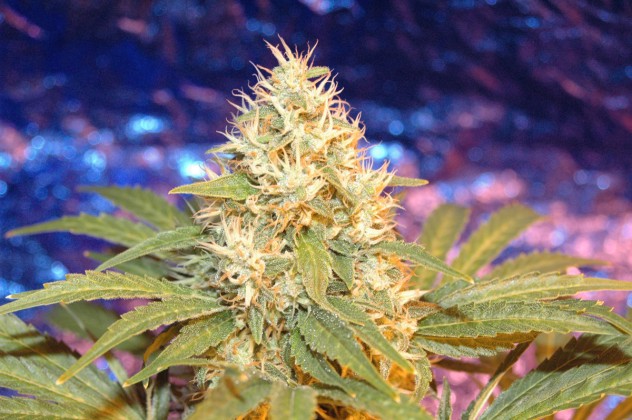
Since marijuana is a naturally occurring plant and not a synthetic drug, it can be developed into a variety of strains. The strains can give the plant a unique taste, color, smell, or potency. Some varieties of cannabis, such as hemp, have no recreational value and can be used to make fiber, oil, paper, rope, and seed. In other cases, marijuana is bred to produce a specific effect.
In the legal marijuana market, growers are often expected to produce unique varieties of cannabis. Some of the most popular marijuana strains in the world include White Widow, which is a cross between the Indian indica and Brazilian sativa, Blueberry, Purple Kush, BC Bud, Holland’s Hope, Alaskan Thunder, Malawi Gold, Purple Dragon, Panama Red, Kaia Kush, Northern Lights, Quebec Gold, Sour Diesel, Skunk #1, and many more.
The Cannabis Cup is the largest marijuana festival in the world. It is held in Amsterdam every November and has recently moved to the US states of Washington and Colorado. The festival is known for its marijuana competitions and top strains. Many awards are given out, including best new product, hash, glass, booth, and the best seed company. The Cannabis Cup includes music, food, and comedy, and is a popular place for finding, selling, and trading marijuana-related products.
8 Where The Wild Buds Grow
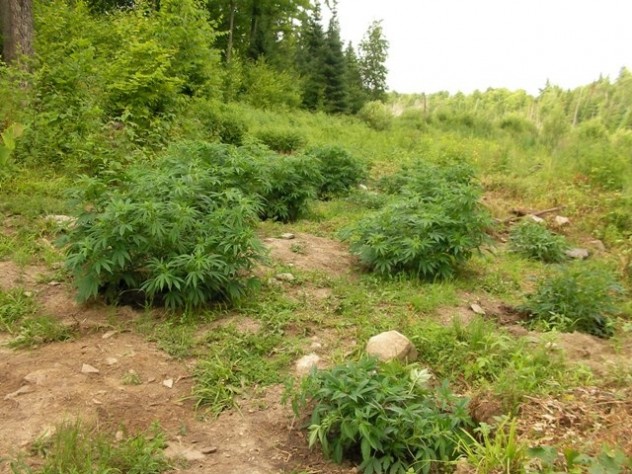
In modern times, the marijuana plant rarely gets the opportunity to spread like a weed. The horticulture of cannabis is heavily controlled, and we often grow the plants in an unnatural life cycle. Some of the most natural marijuana is found in parts of the Himalayas, Northern India, Nepal, and Southern China where it grows in indigenous fields. One of these places is the Annapurna Circuit. In this area of the world, you can find wild marijuana growing in the mountains.
Natural marijuana plants can be found in Siberia, south of the Caspian Sea, in central and southern Russia, on the lower slopes of the Caucasus Mountains, and in India. The plants are widely scattered over the landscape, so it is impossible to determine the exact total area. Once a large patch of marijuana is discovered, the plants need to be cultivated in order to produce potent buds.
In India, Nepal, Pakistan, and Afghanistan, marijuana plants are cultivated into three main products: bhang, ganja, and charas. Bhang is the mature leaves found on the plant, while ganja is the buds, and charas is hashish. Some of the most potent charas comes from Himachal Pradesh, India. For this reason, India has become a popular destination for backpackers, drug smugglers, and people looking to see marijuana in its natural environment. The world’s most productive provider of marijuana is Afghanistan.
7 Budder

The three main forms of marijuana are the flower (buds), resin (hashish), and hash oil. Typically, the THC content for the buds is around 5 to 10 percent. However, the potency of pot has been gradually rising over the years. For example, one study found the average THC levels of buds in 1985 was 3.48 percent, and by 2006 the number had risen to 8.77 percent. The strongest buds have been known to peak at 27 percent THC.
Meanwhile, hash has a THC content of around 15–20 percent, but can get much higher. Sieved hashish averages 45 percent THC, while bubble hash averages about 53 percent THC. The process of making hash involves extracting the trichomes from the marijuana. Trichomes are the hairs and crystals found on the outside of the buds. Once the trichomes are extracted, the resulting kief is heated into blocks of hash.
The most potent form of marijuana is hash oil. Hash oil is made by dissolving unwanted resins with certain solvents, including ethanol or hexane. The resulting product is a fluid or honey oil. The typical hash oil has a THC potency of around 30–90 percent. The most potent form of hash oil is budder, which has been known to contain up to 99.7 percent THC and 5–-15 percent total cannabinoids. Like most butane hash oil, budder can be smoked, vaporized, or used in marijuana edibles. It is an extremely pure substance and doesn’t contain heavy metals, markers associated with fertilizers, toxins, solvents, molds, diseases, or other contaminants. Budder is basically 100 percent pure marijuana. On the other hand, the most potent synthetic THC product ever made is dimethylheptylpyran, which was discovered in 1949 and has a half-life of 20–40 hours.
6 Weed Consumption
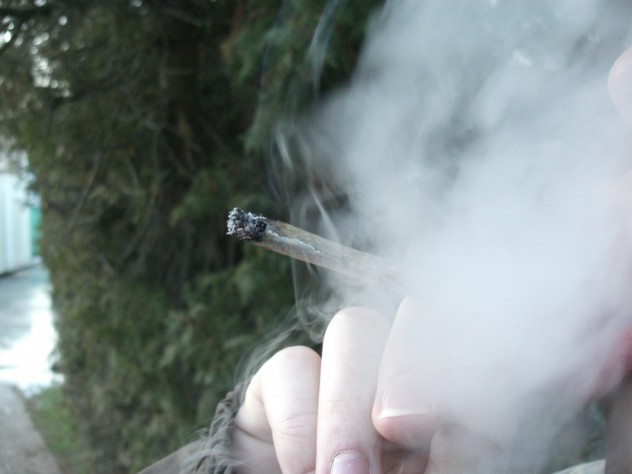
Everyone has a preferred method of consuming marijuana. The most common forms are smoking joints, using a bong, bubbler, hookah, vaporizer, pipe, or taking spots (knife hits). Others prefer to cook edibles such as cake, cookies, brownies, or butter. So what is the best method? Studies have found that people experience different psychological effects with each form of consumption.
One study tested the pain tolerance of people who smoked marijuana and those who used the pill dronabinol, which contains THC. The results found that people who used the pill could tolerate pain longer. It was also observed that dronabinol took around an hour to kick in, while smoked pot took 15 minutes. The study concluded that dronabinol “could produce analgesic effects for longer without the health risks that come along with smoking.” People were also less likely to say that they found the effects of dronabinol pleasurable in comparison to smoked marijuana.
It has been determined that people who smoke marijuana are exposed to carcinogens, which can result in respiratory problems and cancer. People who take spots can be more susceptible to health risks because the weed is heated to such a high temperature. However, this problem can sometimes be offset by cooling the bottle used to smoke, or placing ice in the bottom of it.
A large percentage of marijuana users prefer to inhale the weed, so what is the best option? Research has suggested that it might be the vaporizer, which can lower the proportion of carbon monoxide and toxins in the smoke. It has been determined that water filtration reduces both the amount of particulate matter and toxic substances in smoke, but few experiments have been carried out on the impact of water filtration and marijuana. Joints and blunts can be harmful because of the sure amount of weed consumed.
5 Irvin Rosenfeld

In 1976, a man named Robert Randall filed a lawsuit against the United States Food and Drug Administration in an attempt to get his charges of marijuana cultivation dropped. Randall was a longtime sufferer of glaucoma and used the Common Law doctrine of necessity to win the case. Judge James Washington ruled that the medical prohibition of marijuana was not well-founded, and federal agencies started to provide Randall with medical marijuana. He became the first American to get marijuana from the government in order to treat a medical disorder.
In the aftermath of the Randall trial, the United States Government started a program named the Compassionate Investigational New Drug program, which allowed a limited number of patients to receive medical marijuana. In 1983, a man named Irvin Rosenfeld joined the program. Rosenfeld has multiple congenital cartilaginous exostoses, which causes tumors to form at his joints. In his lifetime, Rosenfeld has had 30 separate tumors removed in six operations. However, since he started smoking marijuana, he claims to have experienced limited new tumors.
Irvin Rosenfeld is the longest-living medical marijuana user. In 2009, he reached a milestone of 115,000 joints smoked. In 2001, Rosenfeld took part in the Missoula Study, which determined that he was in excellent health for his age and condition. In the United States, medical marijuana gained more attention in the early 1980s after people with AIDS started a grassroots movement to get it legalized.
4 Marijuana In The United States

Marijuana is currently illegal under federal law in the United States. However, two states have passed exemptions to the law, Colorado and Washington, where it is legal to possess a certain amount of marijuana. In Washington, Initiative 502 was passed in November 2012. It is credited with being the reason the state saw the highest voter turnout in the nation at 81 percent. The initiative passed with 55.7 percent of 3,095,444 votes. Along with Colorado’s Amendment 64, the marijuana bills were said to be an “electoral first for the world.” In Washington State, the right to use marijuana was obtained by a movement that gathered 241,153 signatures.
In the aftermath of the legalization of marijuana in Colorado and Washington, Mexico announced that it might reconsider its position on cannabis laws. Prosecutors in King and Pierce counties (WA) immediately dropped all misdemeanor cases of marijuana possession. In Colorado, the state government has said that the first pot store should be open around January 1, 2014, while it might take longer in Washington. You can also legally grow marijuana in Colorado, though you cannot in Washington.
In August 2013, it was announced that the US Federal Government would not officially challenge the marijuana laws. The government presented a series of eight priorities for federal prosecutors in regard to cannabis, including selling to minors and using gun violence to fund drug cartels. Obama said last year that “it would not make sense for us to see a top priority as going after recreational users in states that have determined that it’s legal.” According to a 2013 survey by Pew Research Center, 52 percent of Americans were in support of marijuana legalization.
3 Schapelle Corby

The toughest drug laws in the world can be found in Southeast Asia, which is home to the Golden Triangle. The laws are in place to prevent the widespread cultivation of opium, heroin, and marijuana, as well as the production of methamphetamine. Some of the most strictly enforced laws can be found in Indonesia, Thailand, Laos, and Myanmar. In Indonesia, if you get caught with even the smallest amount of illegal drugs, including weed, you can face multiple years in prison. If you smuggle or sell drugs, you can face the death penalty in Indonesia, Laos, and Malaysia. In Malaysia, if you are arrested with 200 grams (seven ounces) of weed you will receive a mandatory death sentence.
Schapelle Corby is an Australian woman who is currently on the Indonesian island of Bali. On October 8, 2004, Corby was arrested at the airport in Denpasarand and found with 4.2 kilograms (9.3 lb) of marijuana in a plastic vacuum-sealed bag, though she immediately denied any knowledge of the drugs. Despite numerous attempts to have the authorities test the bags for fingerprints, they refused. On May 27, 2005, Corby was found guilty and sentenced to 20 years in jail.
In March 2008, the Indonesian Supreme Court rejected Corby’s final appeal against her sentence. However, in May 2012, she was granted a five-year reduction as part of an annual Independence Day remission program. Her new sentence is set to expire on September 25, 2016, but Corby will be eligible for parole before this time. In October 2013, she won an approval from the Justice Ministry office for parole. However, when released, there is a condition that Corby will not be allowed to return to Australia until 2018. Her case has angered many people and hurt relations between Australia and Indonesia.
2 Endocannabinoid System
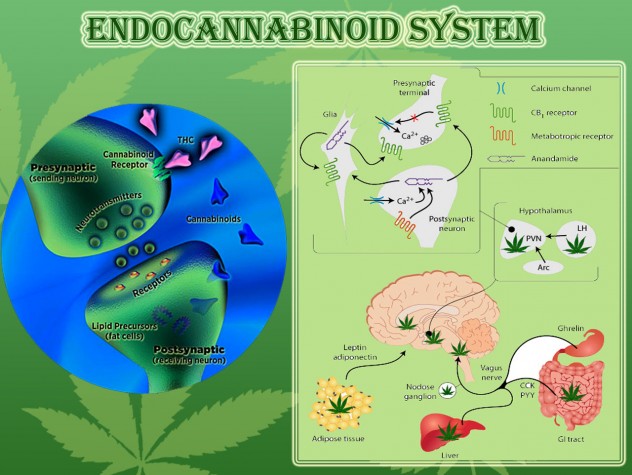
The endocannabinoid system is a group of receptors in the human body that regulate the impact of cannabis. When you smoke weed, the substance targets a variety of physiological processes including motor learning, appetite, pain sensation, mood, and memory. Extensive marijuana abuse can lead to health problems and isolated behavior.
The exact purpose of the endocannabinoid system is unclear, but many studies have been carried out to show how THC impacts behavior. Mice treated with THC show changes in the hippocampus and a decline in short-term memory. Evidence shows that the endocannabinoid system impacts food-seeking behavior and regulates hunger, which is why people get hungry after ingesting THC. The endocannabinoid system also impacts taste perception and marijuana might make people more picky eaters (or give them a sweet tooth).
The endocannabinoid system has been recorded to impact human energy storage, nutrient transportation, and the gastrointestinal tract. It could potentially play an important role in clinical conditions such as human obesity, diabetes, atherosclerosis, and cardiovascular system issues.
The prolonged exposure to marijuana has been linked to anti-social behavior. A study conducted in mice showed that eliminating cannabinoid receptors caused “decreased object exploration, social interactions, and increased aggressive behavior.” The information has helped link marijuana abuse and anxiety-dependent behavior. It has also showed a relationship between smoking weed and the inhibition of excessive arousal.
Studies on the endocannabinoid system have indicated that marijuana can impact body temperature regulation and cause night sweats. Smoking weed promotes sleep in the body and decreased physical energy. In extreme cases, people have reported a condition known as cannabinoid hyperemesis syndrome, which involves recurrent nausea, vomiting, and colicky abdominal pain related to marijuana abuse.
1 Long-Term Impact

Since marijuana is illegal in many parts of the world, it is often difficult to fund research projects and experiments into the long-term effects. Some studies have suggested that marijuana can cause a variety of physical and mental illnesses, while others suggest it can be beneficial. Marijuana smoke contains carcinogens and tar, but evidence linking marijuana to lung cancer is lacking. A recent study in New Zealand found that chronic weed abuse in adolescents led to a lower IQ.
Some studies have examined the impact of your brain while high on marijuana. Like most mind-altering substances, weed impacts the memory, and people generally become less coherent. Some people get lazy and eat junk food, which can cause health problems, while others have reported exercise and motivation after smoking marijuana.
Studies have determined that large-scale marijuana abuse might impair sperm function. Other experiments have found a correlation between marijuana use and anxiety, psychosis, and depression. However, a different study suggested that marijuana could help people who are depressed and anxious, which is based on the findings that weed influences people’s response to negative images and emotions.
In one study conducted by a PhD candidate at Maryland University, researchers exposed young mice to marijuana for 20 days and then allowed them to grow into adulthood. The adult mice later showed impaired cognitive abilities and brain damage. The author took the evidence to suggest that “teenagers who smoke cannabis will damage their brains for life and might be more likely to develop schizophrenia.”
A study from Imperial College London found a correlation between long-term marijuana abuse and dopamine depletion. Medical marijuana studies tell a different story, and weed has been known to help with nausea, weight loss, insomnia, neurogenic pain, asthma, and glaucoma. Marijuana has also been known to help migraines, hangovers, inflammatory bowel disease, fibromyalgia, multiple sclerosis, alcohol abuse, bipolar disorder, Parkinson’s disease, and epilepsy.
